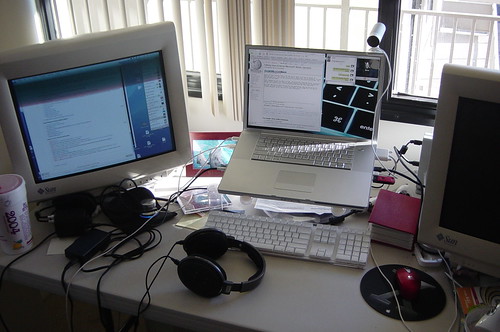Focusing on qualitative and quantitative methods is an area of study that interests me for a few reasons. It links to my interest in academic research and academic language generally, but also to generating new methods for examing self-directed behaviours.
From hair pulling, to chin rubbing, thumb sucking, self-harming, scratching or non-pathological self-grooming...all these are things of interest because they link us to our evolutionary past.
Moments of indecision, the weighing up of costs and benefits, calculating pros and cons...such mental processes usually produce self-directed behaviours. They help us to to navigate our way through the dilemna (do I turn left or right?, buy X or buy Y?, etc.) by soothing the anxiety caused by being in two minds.
In social situations other outward signs of mental processes where two conflicting impulses are in conflict can be seen. Football fans regularly brush their hands through their hair after a near miss of the goal by their team's striker. It is a commonplace event that occurs during every game, but apparently no one can explain it, except by saying it helps relieve tension, eases discomfort and restores equilibrium.
What makes these kinds of behaviours even more fascinating to me is that we share them with other animals. More significantly animals in captivity display more self-directed behaviours than in the wild and hair pulling ONLY occurs in captive animals!
Displacement behaviours have a clear purpose it would seem. They help us to navigate our way through short-term periods of anxiety by soothing us and limiting excitement until the internal conflict caused by the immediate environment has been resolved internally or until the external situation changes and the dilemna is over.
But sometimes people (and animals) can remain in anxious states for long periods and at key points in child development this can lead to unwanted behaviours emerging. Imagine being caught in two minds
about something not just for a few seconds but for hours, days or even
years!
My approach would be to undertake research into what the possible benefits of these behavours are. Do they reduce stress or the
heart rate? Do they affect metabolic rate? What happens if these
behaviours are prevented in some way so the discomfort of being in two
minds is not relieved? These are the kinds of questions I would like to
answer.
But devising experiments that are simple and give clear results is not easy...as any psychologist would probably testify to. So, studying the different methods and approaches to doing research is very useful and also widely applicable!
